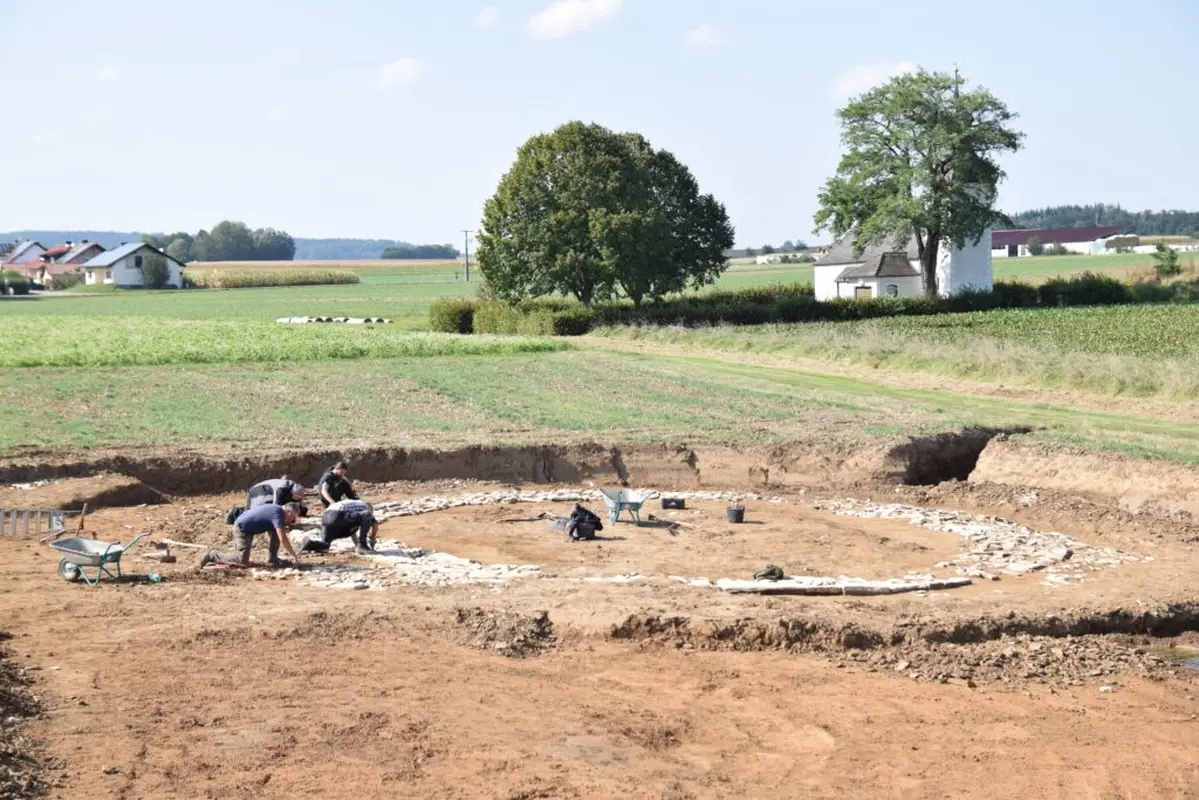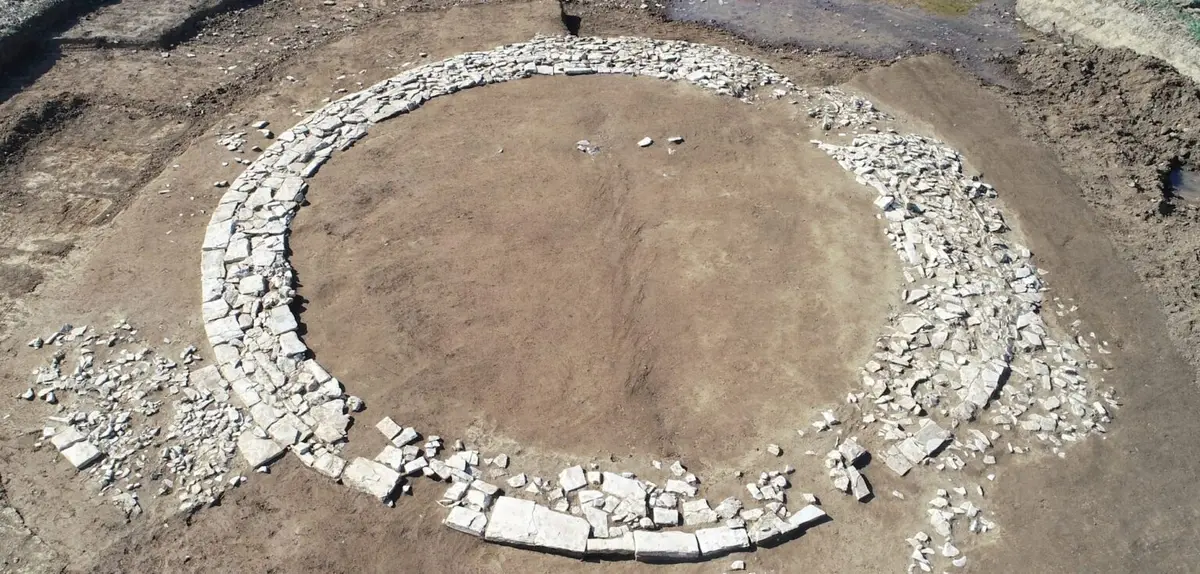 The discovery has astonished who arrived at the site. Researchers believe it to be the foundation of a burial – a family memorial. This finding sheds new light on the Roman presence in the former province of Raetia in southern Germany.
The discovery has astonished who arrived at the site. Researchers believe it to be the foundation of a burial – a family memorial. This finding sheds new light on the Roman presence in the former province of Raetia in southern Germany.
What theories have scientists proposed?
The Bavarian State Office for the Preservation of Monuments (BLfD) announced that the ruins discovered near the village of Volkertshofen in the Eichstätt district are likely the foundation of a Roman burial mound. This round stone structure, approximately 12 meters in diameter, is believed to have served as the base for a burial mound. This discovery is notable because such elaborate Roman tombs are rarely found in Raetia.
The stone ring is located near an ancient Roman road. Attached to the southern side of the foundation is a square extension measuring two by two meters, which may have served as a pedestal for a stele or statue. Despite its monumental appearance, the interior of the structure was completely empty.

“The discovery of such a large ancient burial here was completely unexpected. The mound was located along an important Roman transport route. The family erected it as a distinctive memorial – a place of remembrance and a symbol of social status,” said Professor Matthias Pfeil, a researcher at BLfD.
Interestingly, archaeologists did not find any of human remains or burial artifacts inside. Thus, scientists concluded that this was not a traditional burial, but rather a cenotaph – a symbolic grave erected in honor of someone buried elsewhere. Such monuments were typically established to commemorate notable individuals, emphasizing the family’s prestige and its place in the social hierarchy.
During the era of the ancient Romans, mounds were a common form of burial in Central Europe and the Mediterranean. In the northwestern provinces of the empire, such as Raetia, they were periodically constructed starting from the 1st century AD. Some Roman mounds were built on sites of earlier Bronze or Iron Age burials, as reported by Arkeonews.
Archaeologists believe that the monument in Volkertshofen reflects a blend of Mediterranean architectural influence and Celtic burial customs. “While the stone foundations clearly align with Roman models, mounds in this region predominantly belong to the pre-Roman period. This makes the discovered mound an exceptional find, crucial for understanding cultural exchange in the province of Raetia,” noted BLfD.
According to scientists, the memorial found in Volkertshofen helps to better understand the burial practices of Roman settlers in ancient Raetia.
